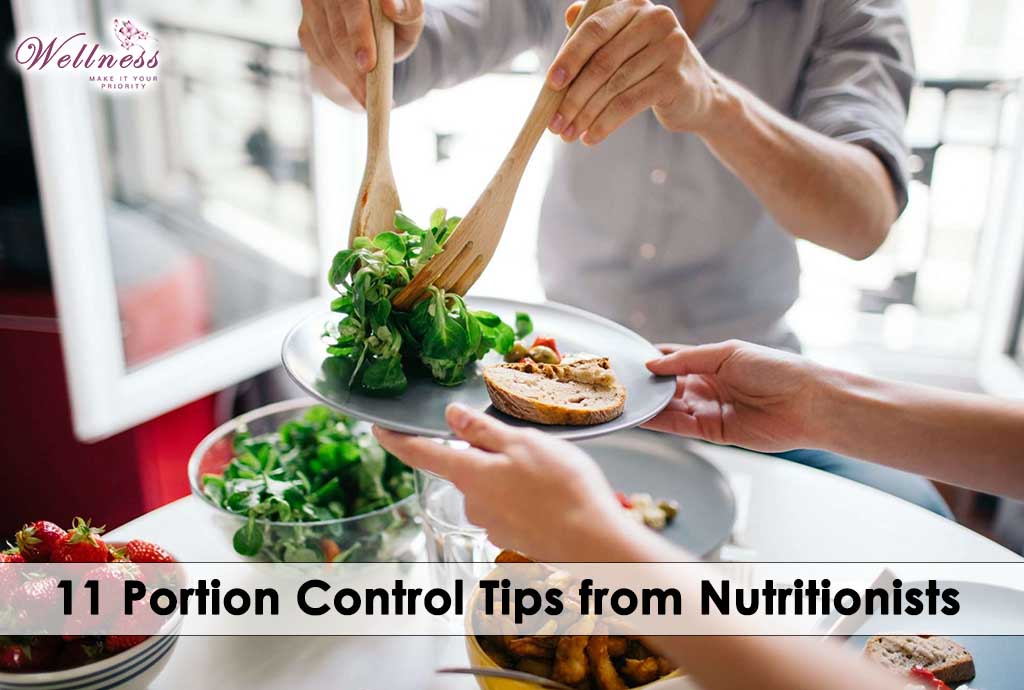Research shows even with the best intentions, people usually tend to overestimate their portion size. Whether you are only trying to improve your eating habits or have a weight loss goal, being careful about your portion size, ensures you are not eating too little or too much. Understanding your nutrition requirements and listening to your body is crucial. There are 11 portion control tips from nutritionists that you can use to improve your eating pattern. You can incorporate these 11 portion control tips from nutritionists to lead a healthy and fit life.
Table of Contents
First, let’s understand what is portion control and how it works, before proceeding toward 11 Portion Control Tips from Nutritionists;
What is Portion Control?
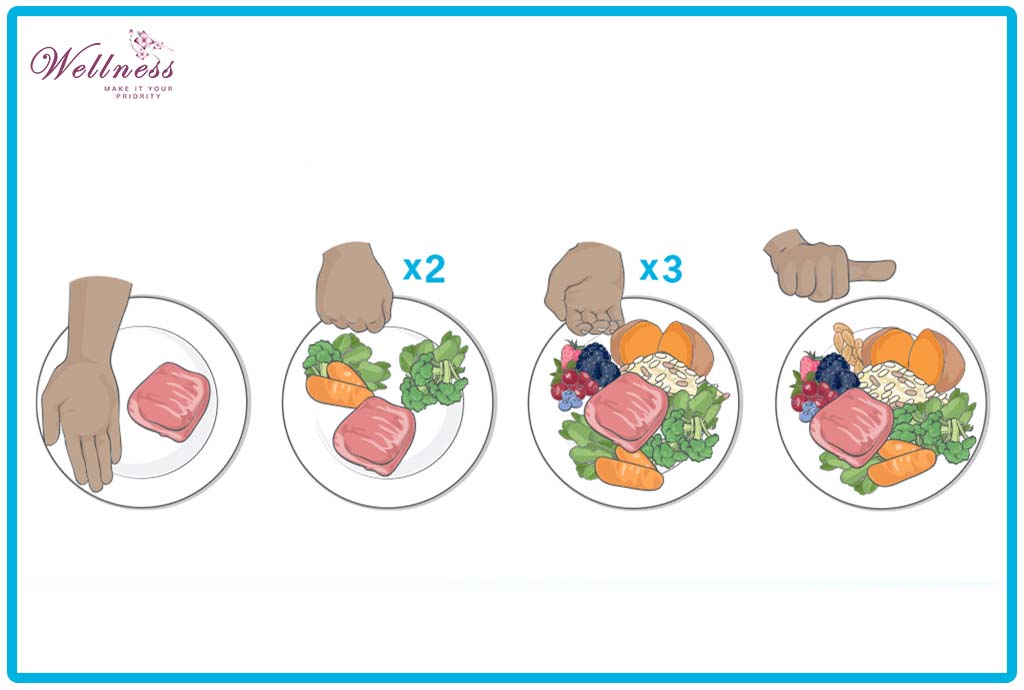
Portion control is all about;
“Healthy and precise amount of food Consumption”.
There are numerous methods to moderate your food intake, in general, portion control is a way of moderating your diet to control the food calories and over-consumption, that helps in achieving health goals. Portion control is beneficial for everyone as it supports overall health. Specifically, it can be a perfect solution for individuals having a weight loss goal.
What are Proper Portion Control Sizes?
Portion control sizes are the recommended quantity of a certain food that a person should eat in a single sitting. The proper portion size depends on the type of food you are eating and how that food is prepared. Continuing with healthy portion sizes helps to stay conscious of what and how much you are consuming in a single day. Normally, people can easily finish a large meal serving. That’s why portioning out your every meal is essential to prevent overeating and unhealthy living.
Some nutritionists suggested serving sizes for meals are:
- Fruit: one whole fruit for pears, apples, etc., and around 1.5 – 2 cups for barriers or cut fruits
- Dairy: ½ – 1 cup
- Oils: 1 – 2 teaspoons
- Starchy foods or grains: ½ – 1 cup
- Non-starchy vegetables: around 1 cup
- Protein foods like eggs, meat, beans, nuts: 4 – 6 ounces
Here are the 11 portion control tips from nutritionists to maintain a healthy lifestyle by keeping yourself aware of your food portions.
11 Portion Control Tips from Nutritionists
1. Water Before Meal
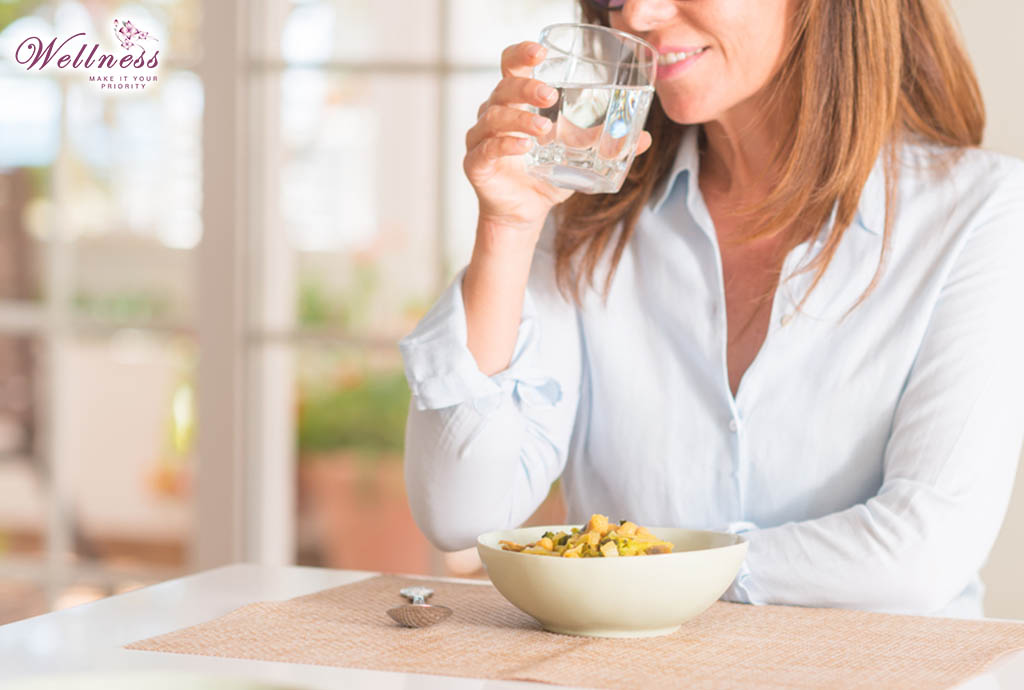
The most important tip among the 11 portion control tips from nutritionists is drinking water. Drinking a big glass (16 ounces) of water according to dietitians will fill your stomach naturally and you’ll be less likely to be eating extra food. Another thing that’s usually overlooked is, that sometimes dehydration symptoms are the actual cause for making you feel extra hungry all the time. When you are feeling hungry, try water at first as generally, thirst is confused with hunger. Therefore, sipping a few ounces of water before eating can eliminate what feels like partial hunger.
2. Use Small and Color-Contrasting Dinnerware
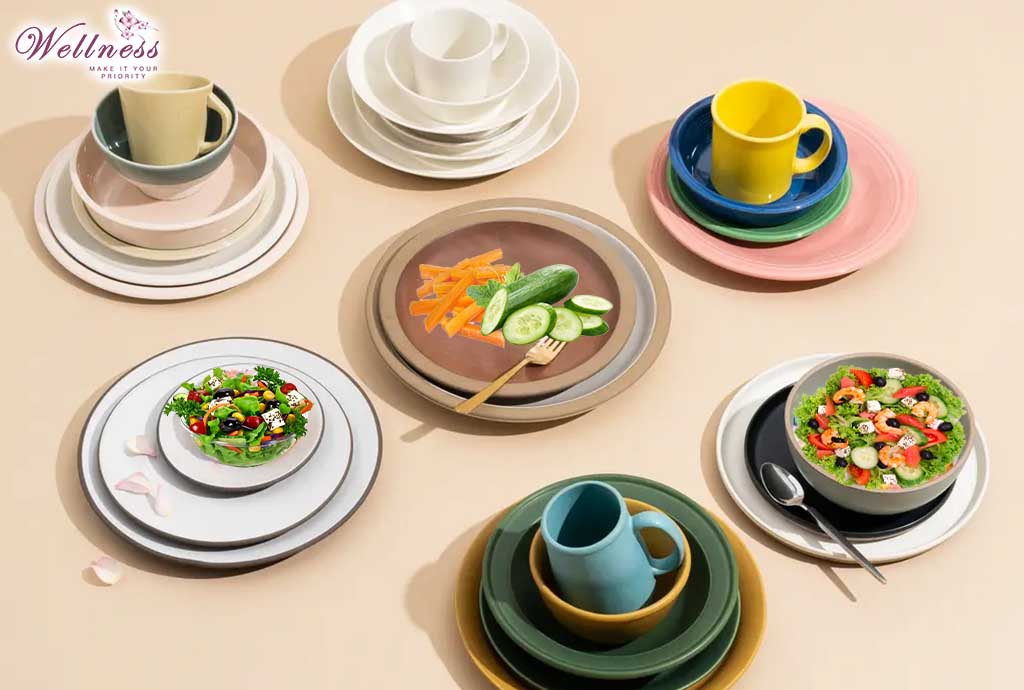
Evidence confirms that the size of the bowls, glasses, plates, and spoons unconsciously influences how much food you’ll be consuming. Using a large bowl or plate can cause individuals to add extra food to their dishes, or may affect visual eaters as they start feeling unsatisfied without finding their dish full of food. According to a study, individuals who were given large-sized bowls consumed 75% more pasta in comparison to ones with medium-sized bowls, however, the food was not rated as notable or tastier.
The next time you are having a meal, try using a small bowl or plate, to witness how dinnerware is going to affect both your interpretation about meal satisfaction and your food behavior. Not only it will impact the quantity of food you’ll be consuming but also shows how satisfied you will be with such a limited portion.
Another study suggests the color of your plate also influences your eating patterns. If you want to limit your eating, try using color-contrast plates for your food, for instance, if you are having pasta with red sauce for dinner, use a white plate. In contrast, if you want to have more of your food try using the same color dishes as you can try eating green vegetables from a large size green bowl or plate.
3. Read the Labels of Food Items
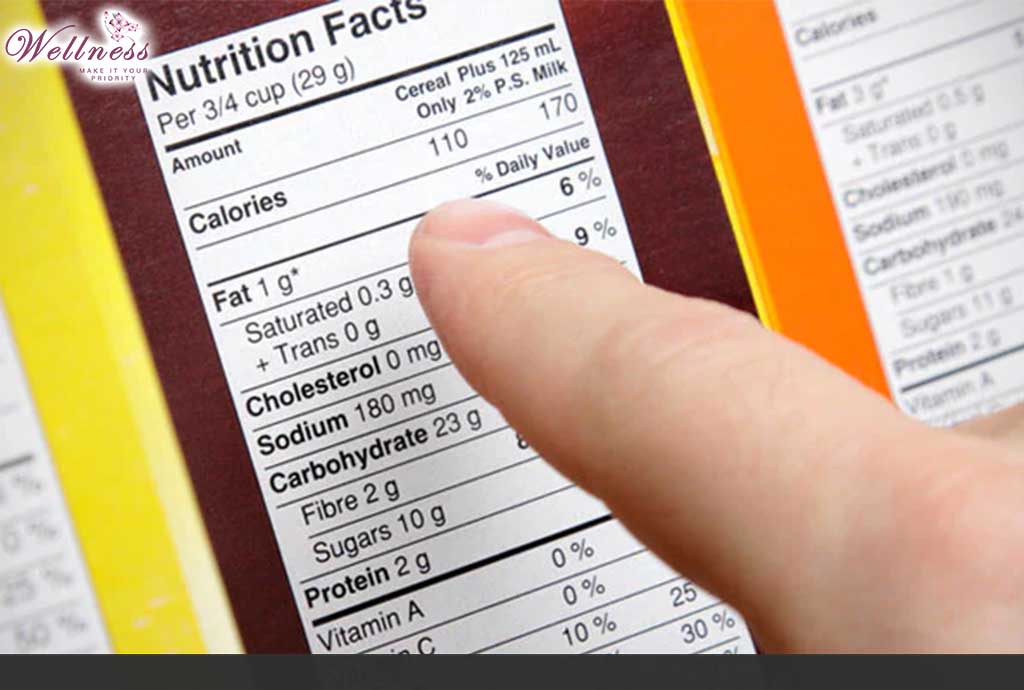
The amount of food you should consume depends on the type of food it is. One of the easiest ways to understand how many calories including other nutrients are present in a single-size serving is through reading the ‘food labels’. Nutrition information and serving sizes on food labels are according to the 2,000-calorie-a-day diet format. In case you haven’t decided on any specific calorie count for each day, you can simply adjust the portion sizes/number of servings as per your needs.
Surprisingly, the food packaging is not always based on the single serving criteria. For instance, a regular soda bottle (20 oz.) – usually found in vending machines – is 2.5 servings in actuality. This means if you are drinking this whole soda bottle in a single sitting, you’ll be required to multiply the per-serving sugar, calories, etc., from 2.5 to calculate your total.
4. Do Not Eat from a Box or Bag
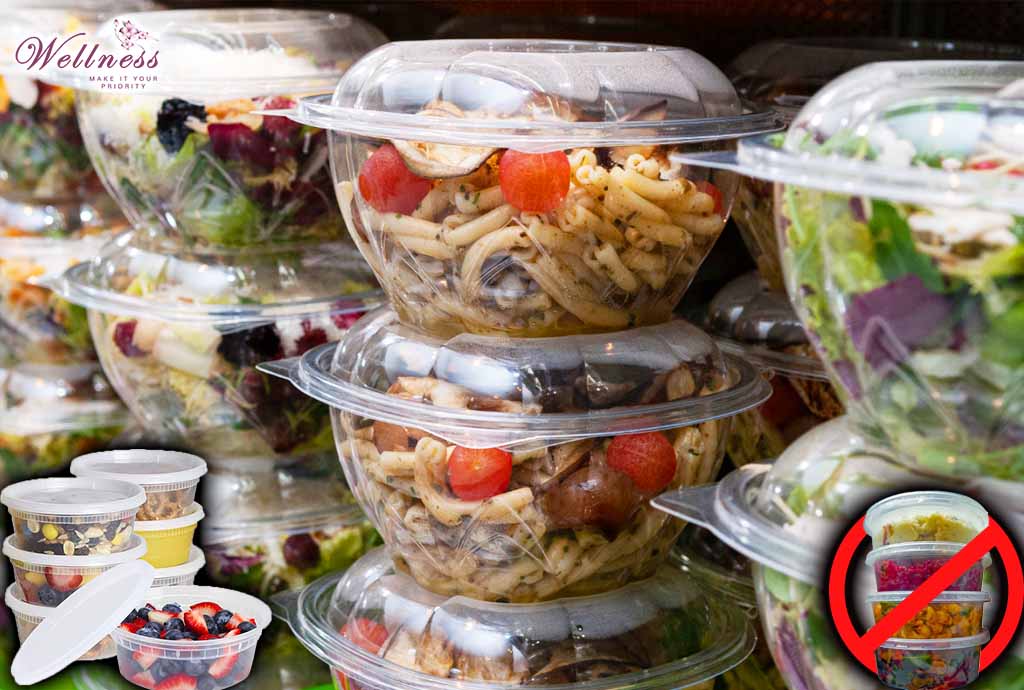
When you start having your chips in a bag, it’s difficult to pay attention to how much you are consuming. Nutrients article 2021 suggests people eating snacks from larger packages ate more as compared to those eating from small containers. This might happen because people were unaware of the serving sizes while eating from larger bags. Smaller snack containers work as a visual cue for people that they have eaten a full portion. You can implement this technique over your snacks too. If you buy a tin of nuts or a bag of pretzels with 10 servings, divide it into 10 smaller portions ahead of time.
5. Setting “Smart” goals
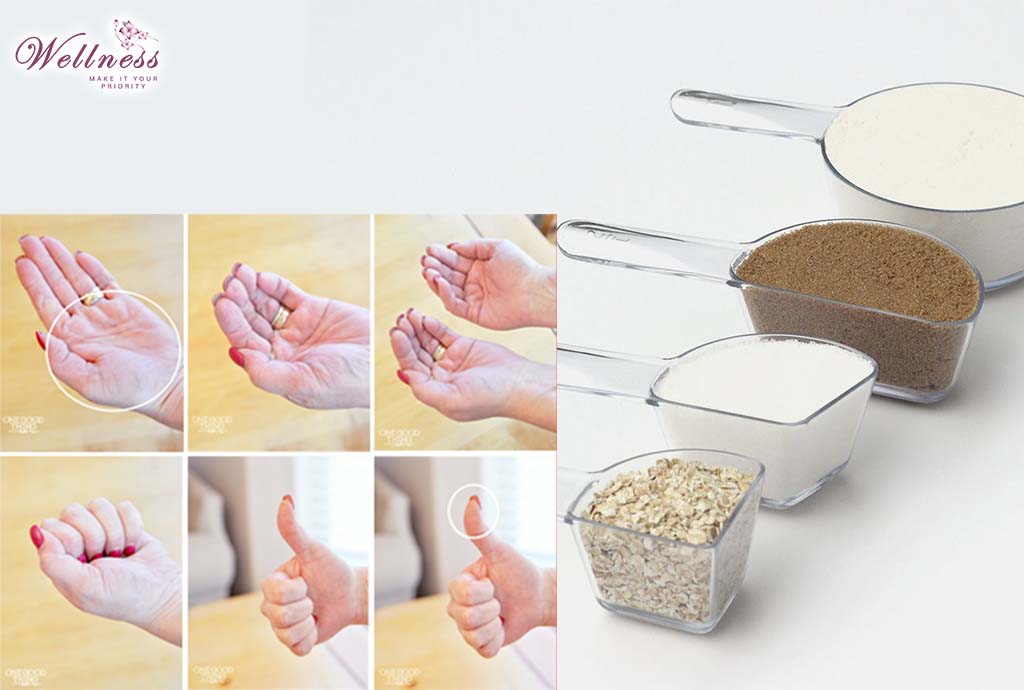
Measuring Cups
At the beginning learning about proper portion sizes can be a bit confusing or might be overwhelming. With the passage of time, you’ll likely be able to identify the right size of food just by looking at it. Therefore, in the start, try getting help from a foolproof method, such as measuring tools (cups, etc.) to observe what 1 or 0.5 cups of food looks like.
Hand References
It’s hard to always have access to measuring devices, or on some occasions, you may not find time to pull out your measuring cups. Rather than measuring tools, you can use your hands for reference measurements. This might be a flawed method as every person has a different hand size. But it still works, for instance, taller people with larger hand sizes, also have higher calorie needs due to their large size, so the hand reference method is roughly applicable.
A few estimated serving sizes while using your hands are:
Fist: The size of your fist is approximately a portion of non-starchy vegetables.
Palm: The size of your palm is about a serving of protein food, such as fish, beans, or meat. Ideally, it’s a flat layer or a level, not piled up on your palm.
Thumb: The size of your thumb is about a portion of healthy fats, such as oils, nuts, etc.
Cupped Hand: A cupped hand represents a single portion of rich carbohydrate foods, for instance, starchy vegetables, grains, etc.
How Much Should I Eat – Quantity and Quality
People who are interested in knowing how and what they should eat – can have assistance with these quantity and quality checks. You can create a healthy lifestyle plan according to your age, sex, physical activity, health problems, etc. all described in the article.
6. Easy-to-Remember Visual Cues
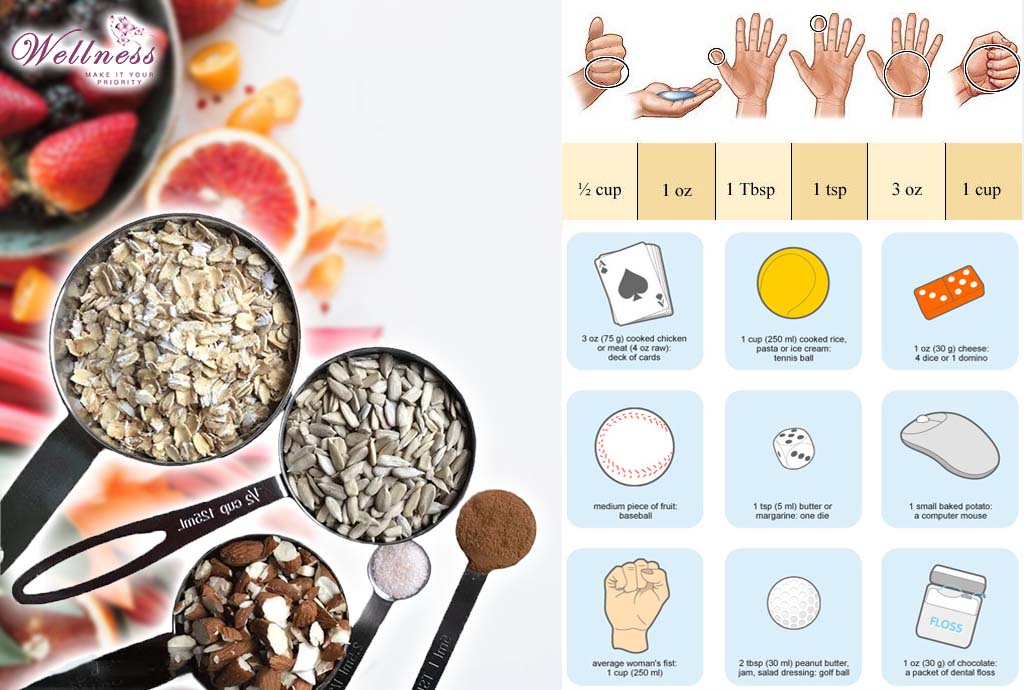
Another tip by nutritionists is to use memorable, easy visual cues for health awareness, to understand how much food you should be eating, or how much a serving of food is. Here are a few examples:
Golf Ball = About 1 ounce of nuts
Tennis Ball = About 1 cup of vegetables, whole grains, or fruits
One Dice = 1 serving of margarine or butter
Three Dice = 1 ounce of cheese
Deck of Cards = Around 1 serving size of fish, poultry, or beef
7. Do Not Prefer Carbs as Main Portion of Meal
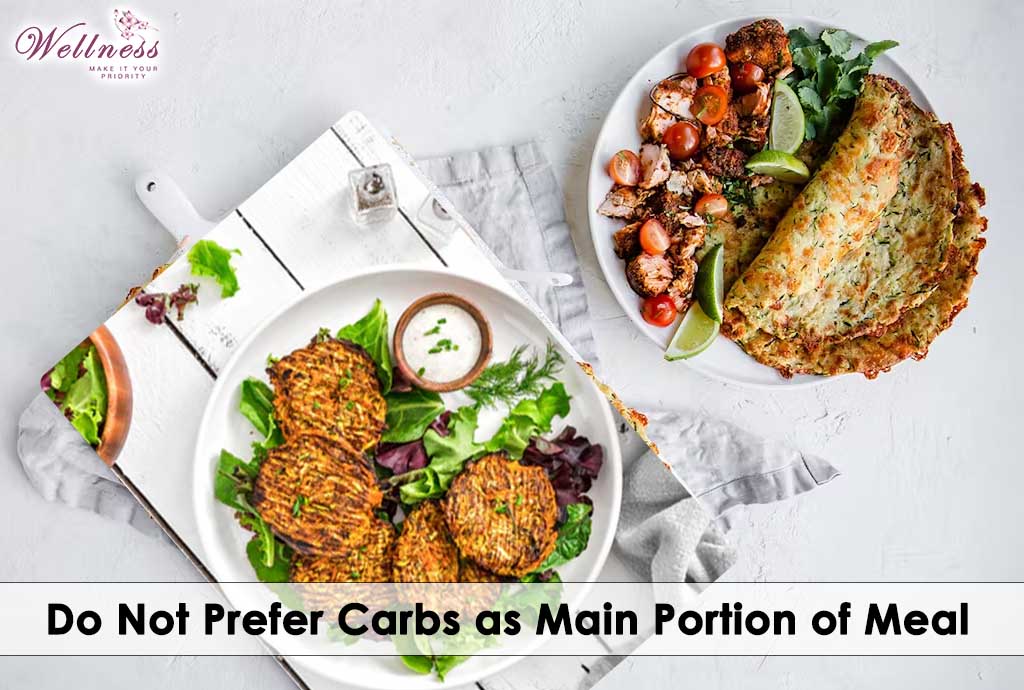
Another essential way to cut down your calorie count is to focus on your way of using starches and grains. For instance, look at your breakfast, instead of initiating with a granola base, have some yogurt with a tiny amount of granola on top, to add a crunch you crave. Likewise, apply the formula to your other meals. For example, at lunchtime fill your plate with veggies with a serving of lean protein, alongside a quarter cup of brown rice or any other carbohydrate you prefer eating.
8. Have Soup Before Meal
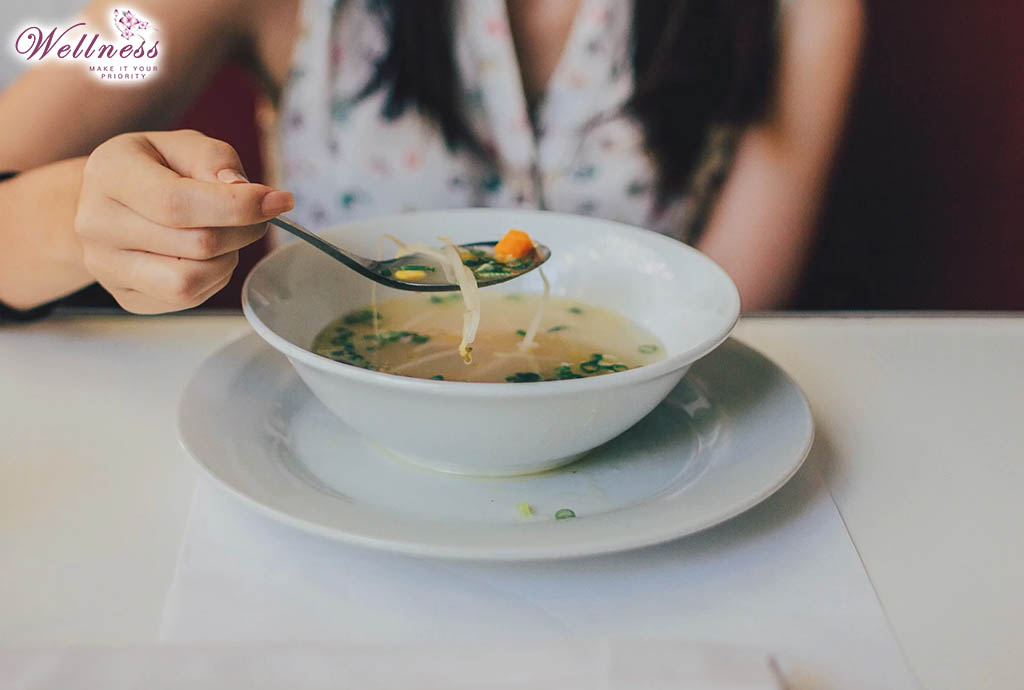
According to the Obesity Review article 2021, solid and harder textures can help you feel fuller. Viscous or chunky soups are particularly the source to feel sated. So, before digging into your meal, have some soup, it might seem counterintuitive to be an addition to your meal, will make you feel fuller and works like water. In fact, having soup before a meal is more beneficial than water, it’s a healthy way to nourish yourself, specifically if it contains natural fiber like vegetables or proteins like eggs.
9. Vegetables and Fiber
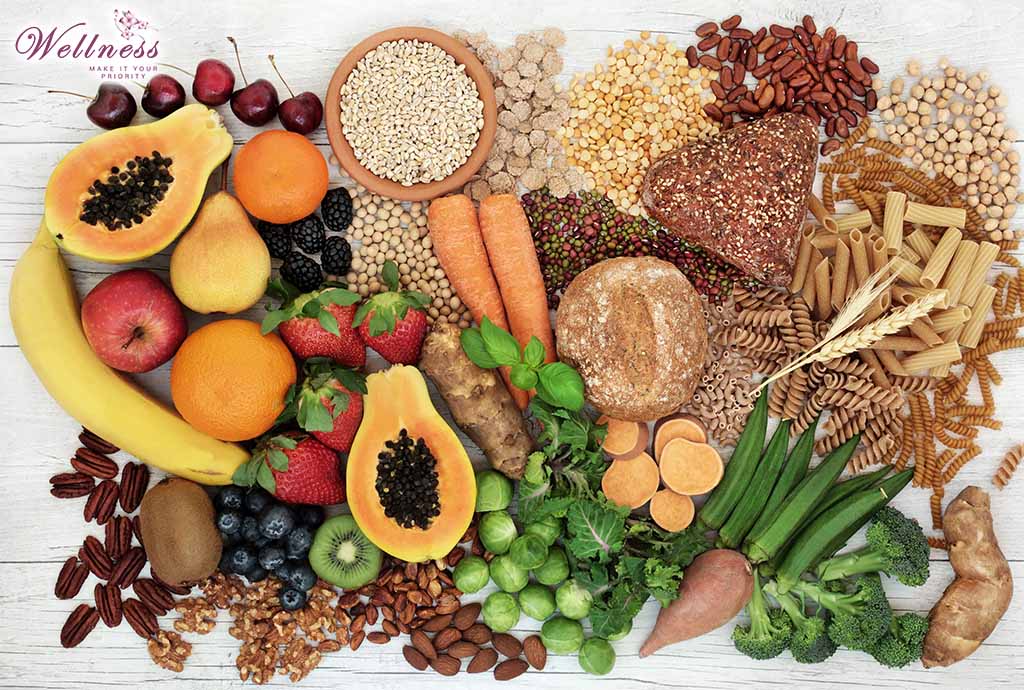
One of the easy and healthy methods to cut your calorie intake while feeling full is to ‘bulk up your meals with vegetables’. For instance, Spinach rich in nutrients and fiber, can be added to Stir-fires and pasta, or can be used as a sandwich-topper. Moreover, you can replace meat with mushrooms, whole-wheat with white bread, or can add diced apples to your oatmeal. There are plenty of ways to stuff your meals with vegetables, to remain healthy and fit. Vegetables are also a great source to keep your skin fresh and glowing.
10. Eat Slower
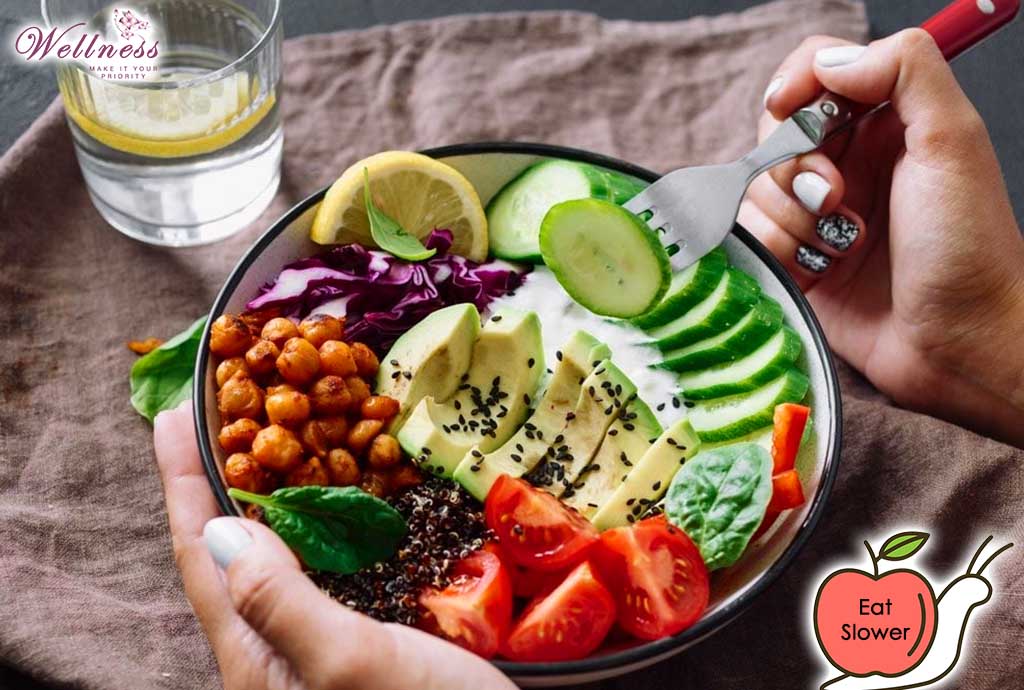
According to 11 portion control tips from nutritionists, if you take time to eat, it will increase enjoyment while decreasing your portion sizes. For instance, having dinner with your favorite person or listening to your favorite music with dim lights sets the tone for an enjoyable meal. Most importantly, try slow chewing, put your fork/spoon down between bites, have small bites, and be attentive towards your eating.
Your brain from the time you start eating, takes approximately 20 minutes to send out signals of feeling full. When you start chewing every bite, you’ll be taking more time to eat the similar-sized portion, which you were previously consuming really fast. Leisure eating provides ample time for the brain to trigger signals of fullness, and feeling full means eating less.
11. Meal Preparations
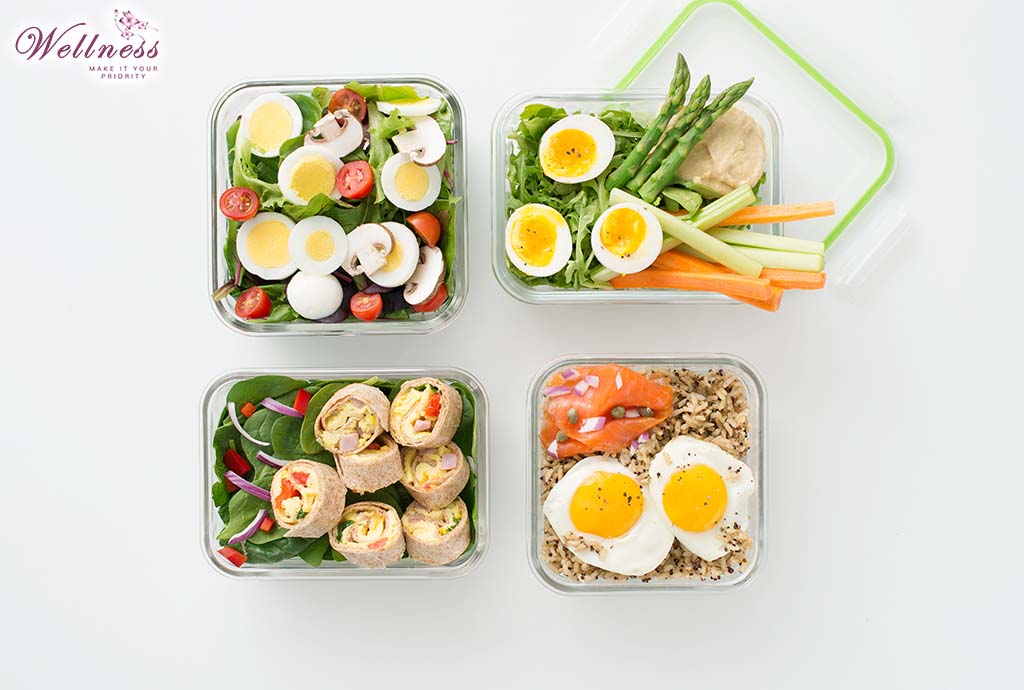
Portioning out nutritious foods and planning your meals is a perfect option to make healthy diet choices whenever you are hungry. Specifically, during stressful and busy days, when you have a lot to do and don’t get the time to draw mindful eating patterns.
One option is that you can prepare your food in bulk, which means making extra meals or side dishes and organizing portions into containers and boxes. Another option is that you can cut your veggies and make portions of uncooked foods, so later on you can just grab your prepared food and quickly finish cooking whenever you feel hungry.
Frequently Asked Questions
What is Portion Control by Nutritionists?
Portion control means eating a healthy diet in a healthy way, limiting every portion of your meal while making certain healthy food selections. You can have a close look at the details of portion control in the above section of this article 11 portion control tips from Nutritionists.
Why portion control is important?
Controlling your portion can be the best solution to lose or maintain weight, specifically for those who are not very fond of diets and exercise. Portion control can help you lose excess fat and keep your body healthy, for instance, if someone is suffering from uric acid, controlling meal portions can help reduce the level of uric acid.
Nutrients have a great focus on portion control methods, you can have a close look at this article 11 Portion Control Tips from Nutritionists for a better understanding.
What are portion control tools?
Measuring cups or hand references are perfect tools for measuring your portion sizes. For more details, you can let’s have a look at the article above 11 portion control tips from nutritionists.

